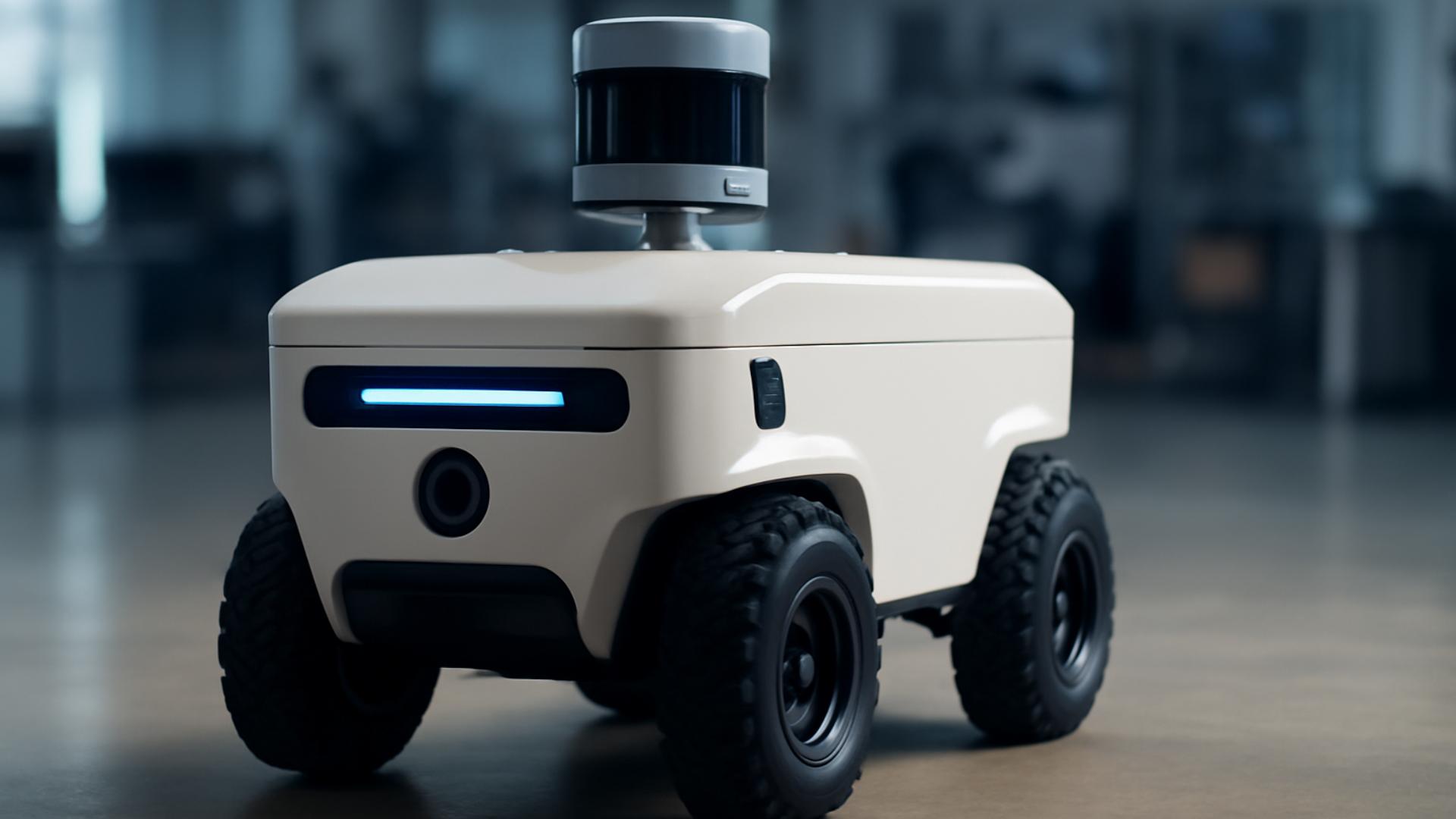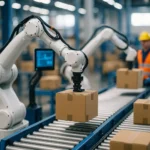Welcome to the brave new world of autonomous machines where technology is reshaping the landscape of industries, transportation, and even the way we live. In this age of rapid innovation, understanding the fundamentals of autonomous systems has become crucial for us all. Whether it’s self-driving vehicles, intelligent household robots, or industrial automation, these machines are revolutionizing tasks by infusing human ingenuity with advanced technology. Let’s delve into the realm of autonomy, where machines act with unparalleled precision and efficiency, all while ensuring enhanced safety through cutting-edge sensors and software.
The Evolution of Autonomous Systems
The journey to autonomous systems has been long and intricate, powered by relentless technological advancements. It began with simple programmable machines and has now evolved into sophisticated entities capable of complex tasks without direct human intervention.
Autonomous systems are essentially machines equipped with the ability to sense their environment, process the gathered data, and make informed decisions. These systems utilize a combination of sensors, artificial intelligence, and machine learning algorithms to operate with minimal human input. The core objective is to mimic human-like decision-making capabilities, allowing these machines to function independently in dynamic settings.
One notable development is in autonomous vehicles, which stand at the forefront of this evolution. Through a seamless integration of software, sensors, and data analytics, these cars can navigate roads, avoid obstacles, and ensure the safety of passengers. While the idea of self-driving cars was once confined to science fiction, today, it is becoming a reality on our roads.
Looking broader, the scope of autonomous technology is vast, spanning various applications—be it in healthcare, agriculture, or logistics. These systems enhance productivity while reducing operational costs. As we advance, the focus remains on making these systems more perceptive, reliable, and adaptable to varied environments.
The Role of Data and Sensors in Autonomous Machines
Central to the functioning of autonomous machines is the constant interaction with their environment, facilitated primarily through data and sensors. These components are the senses of an autonomous system, enabling it to perceive and interpret the world around it.
Sensors, ranging from cameras to lidar and radar, capture a myriad of data points. Cameras provide visual input, while lidar uses laser light to gauge distances, and radar ensures accurate object detection even in poor visibility conditions. These sensors are crucial in enabling autonomous vehicles to navigate safely and efficiently.
Yet, gathering data is only half the battle; processing this information is where the magic happens. Here, software and algorithms come into play, helping in deciphering patterns, making predictions, and acting on the insights derived. By doing so, these systems can anticipate changes and adapt to new challenges in real time.
In the context of industrial automation, sensors monitor parameters like temperature, pressure, and motion, ensuring machines operate within optimal conditions. By continuously processing this data, autonomous systems can optimize performance and preemptively address potential issues, thereby enhancing efficiency and reducing downtime. {image_content}
Challenges and Safety Considerations
While the promise of autonomous machines is immense, it is accompanied by a set of challenges that must be navigated to ensure effectiveness and safety.
Security remains a significant concern, as autonomous systems must be shielded from cyber threats. Any breach could compromise the functionality and safety of these machines, leading to dire consequences. Hence, robust software and encryption measures are crucial.
Another challenge is the ethical and regulatory landscape. The deployment of autonomous vehicles, for example, demands new legal frameworks that address accountability in the event of malfunctions or accidents. As we integrate these technologies into society, it’s vital to establish guidelines that balance innovation with public safety.
Moreover, despite advancements, the technology is not foolproof. Autonomous systems still struggle with unpredictable elements like weather conditions or unexpected obstacles. Continuous research and development are essential to enhance the reliability and adaptability of these machines.
Finally, there’s the social aspect. As autonomous systems take over certain tasks, there’s a growing discourse on the impact on jobs. While these technologies open up new opportunities, they also necessitate a shift in skillsets, urging a re-evaluation of educational and training paradigms globally.
Applications of Autonomous Machines
The applications of autonomous machines are vast and varied, extending beyond the realm of transportation. From healthcare and agriculture to logistics and retail, these systems are making profound impacts across industries.
In healthcare, autonomous robots assist in surgeries, ensuring precision and reducing recovery times. They also play a role in patient care, delivering medications and monitoring health metrics. This amalgamation of technology and healthcare not only improves patient outcomes but also streamlines operations in medical facilities.
Agriculture too has witnessed a transformation with the integration of autonomous machines. Drones and robotic harvesters optimize crop management, while soil sensors provide critical data for enhancing productivity. These innovations help farmers make informed decisions, leading to better yield and sustainable practices.
In logistics, autonomous vehicles are revolutionizing supply chain management, enhancing efficiency, and reducing operational costs. Similarly, in retail, autonomous robots manage inventory, ensuring shelves are stocked and customer needs are met promptly.
These applications underscore the potential of autonomous systems to redefine industries, driving innovation, efficiency, and growth. As technology continues to advance, the possibilities seem endless, offering a glimpse into a future where autonomous machines are integral to our everyday lives.
As we stand on the cusp of unprecedented technological advancements, autonomous machines symbolize a new dawn of innovation and capability. While the journey is fraught with challenges, the potential rewards of enhanced efficiency, safety, and productivity are undeniable.
Continuing to embrace these technologies, we must cultivate a balance between human oversight and machine autonomy. By doing so, we ensure these systems not only complement our capabilities but also uphold the values and ethics crucial to societal progress.
In embracing the era of autonomous machines, we are embarking on a transformative path—one that promises to redefine the way we live, work, and interact with the world around us. It’s a thrilling prospect, and the possibilities are limited only by our imagination and ingenuity.
FAQ
What are autonomous machines?
Autonomous machines are devices or systems that can perform tasks without human intervention. They use sensors, artificial intelligence, and machine learning to navigate and make decisions in real-time.
How do autonomous machines make decisions?
These machines utilize algorithms that process data from their environment through sensors. They then analyze this information to make informed decisions, often using predefined rules or learning models to achieve their objectives.
What are the primary components of an autonomous machine?
Key components include sensors to capture data, processors to analyze the information, actuators to perform physical actions, and software algorithms for decision-making. Together, they enable the machine to perceive, process, and act upon its environment.
In which industries are autonomous machines commonly used?
Autonomous machines are prevalent in several industries, including automotive (self-driving cars), agriculture (automated tractors), manufacturing (robotic assembly lines), and logistics (drones for delivery). Each sector benefits from increased efficiency, safety, and cost reduction.
What are some challenges faced by autonomous machines?
Challenges include ensuring safety and reliability in unpredictable environments, addressing ethical concerns related to decision-making, and overcoming technical limitations such as sensor accuracy and processing power. Additionally, regulatory and legal considerations play a significant role in their deployment.



